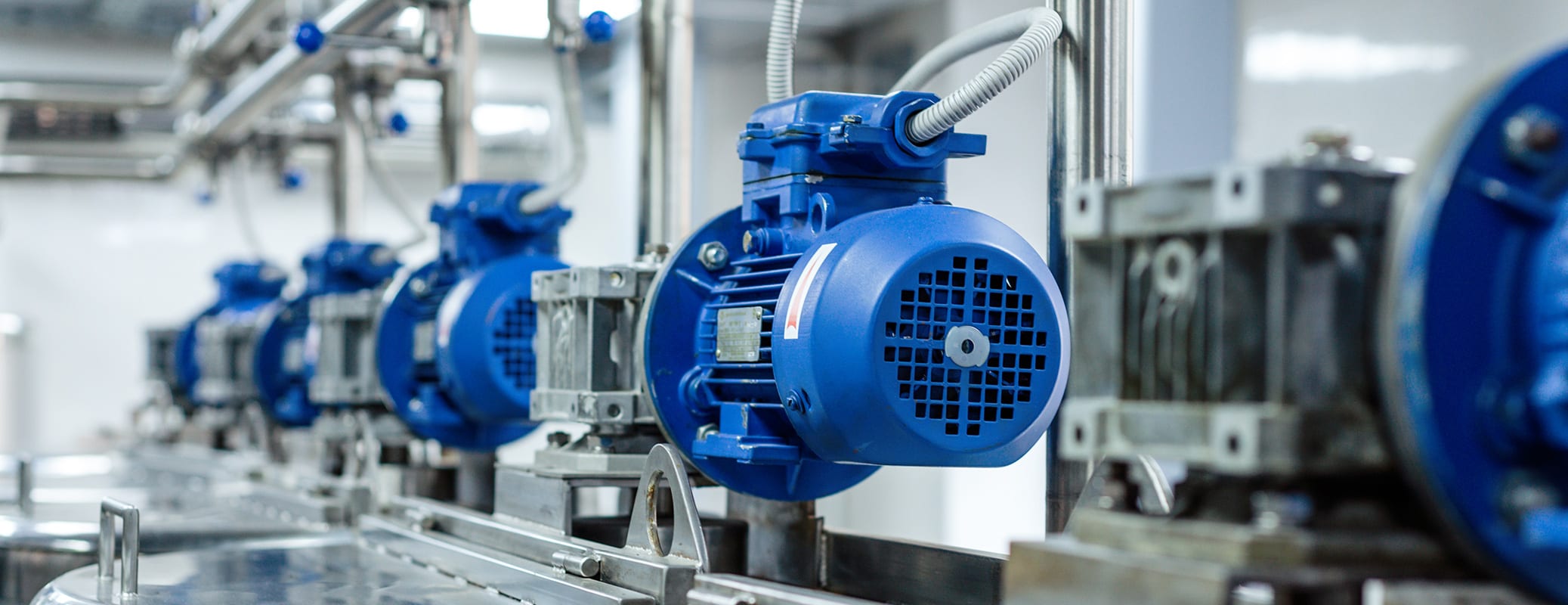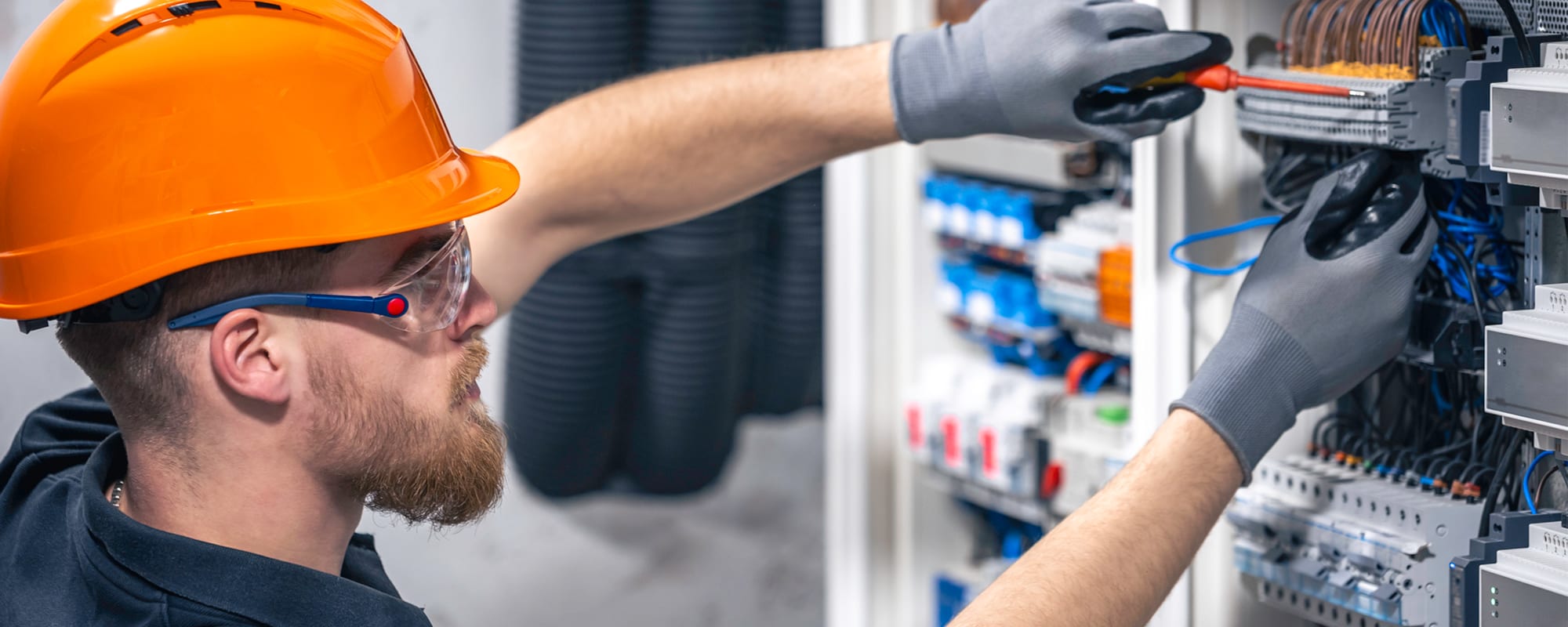
Allen Bennett
Field Application Engineer, RS
An industrial motor starter is, in its most basic form, a fairly simple device. It consists of a contactor that provides power to the motor, an overload relay that prevents the motor from drawing too much current over a more extended period of operation, and some form of circuit protection that mitigates current spikes caused by short circuits. Beyond these simple components, however, are several variations of motor starter, each with different applications and considerations.
When choosing the right motor starter for your needs, it is critical to know what options are available. Allen Bennett, a field application engineer at RS, outlines some of those options in this guide to choosing an industrial motor starter that best fits a specific requirement.
Types of Motor Starters
Although the essential functions of an industrial motor starter are mostly the same — to start and stop a motor safely, reverse the motor if needed, and provide a degree of short-circuit protection — specific types of starters offer a variety of additional features suitable for different applications.
Direct Online Starter (DOL)
The simplest option available, a direct online starter (DOL), consists of a magnetic contactor that connects to the motor, an overload relay, and short-circuit protection. These are simple to operate, cost-effective, and are ideal for applications where only basic motor functions are necessary.
“What a DOL starter does is run the motor at a constant velocity that is set up by the number of poles inside the motor,” says Bennett. “For example, a very common velocity for an AC synchronous motor is 1,800 rpm, and depending on the frame size, it will pull a certain amount of torque at a constant velocity.”
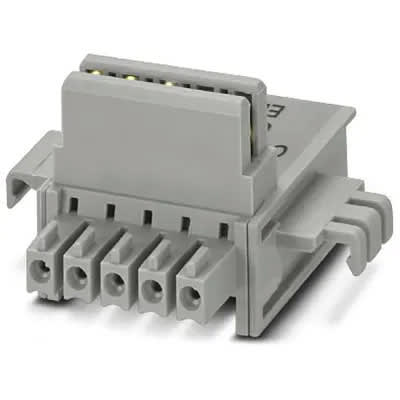
DOLs are most often used when acceleration control is not considered a high priority. When switched on, they provide a high influx of current — usually six to eight times the full load amp rating of the motor — which results in rapid ramp-up time. “The acceleration with a DOL is not really adjustable,” says Bennett. “It is determined by the torque in relation to the inertia of the load.”
In some applications, this can be a beneficial feature, but over time this current inrush can damage the motor windings. Because of this, DOLs are typically employed with smaller, lower-horsepower motors. It is also worth noting that while these starters have a lower upfront cost, their limited energy efficiency may result in higher operating costs over time.
Hybrid Motor Starters from Phoenix Contact are good examples of this kind of starter and offer several additional useful features such as monitoring current from a remote location, TUV-certified emergency stop performance, and the ability to group several modules to a single on/off switch without additional wiring.
A starter from Eaton’s Freedom Series from Eaton’s Freedom Series is another quality DOL option. Their unique features include three separate terminals to access the magnet coils for easy replacement, interchangeable heater packs, horizontal or vertical mounting capabilities, overload protection for up to 900hp, and even the option to install shields for added protection against shocks.
Soft Starter
As their name might indicate, soft starters (also known as reduced voltage solid-state starters) are designed to gradually increase voltage upon startup to ensure a smooth, jerk-free acceleration to the desired speed.
“What is unique about a soft starter compared to a DOL is that you can set the acceleration and deceleration,” said Bennett. “So if you have a relatively large inertial load with a smaller motor, then you can ‘soft start’ it to gradually get the motor up to a constant velocity with minimal wear.”
To accomplish this, a soft starter makes use of a phase-controlled TRIAC (triode for alternating current) held at a relaxed conduction angle, which gradually increases throughout the startup.
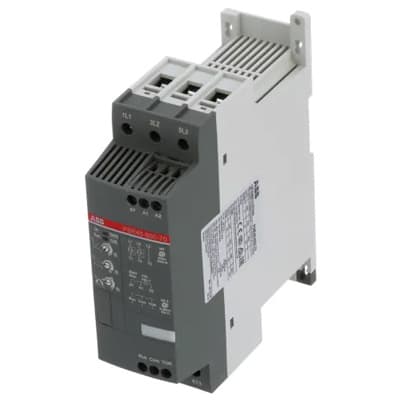
There are specific applications where this feature is a necessity, especially when dealing with sensitive materials, but it also eases the strain on motor components. Additionally, due to the reduced voltage used, soft starters are more energy-efficient than their DOL counterparts and can reduce operating costs over time, even if their initial cost may be greater. Some models only provide a “soft start” during the startup phase, but others are capable of ramping down gradually during shutdown, as well.
For soft starters, Bennett suggests checking out options such as Carlo Gavazzi’s RSE Series, Schneider Electric’s Altistart ATS 01 Series, and ABB’s PSR Series.
Star Delta Starter
A star delta motor starter functions mostly the same as any other standard motor starter — with one crucial difference. Due to its unique star-connected stator wiring, these starters can slash the starting current needed to start the motor by a third. Not only does this drastically improve the energy efficiency of the motor, which results in reduced operational costs, but it can dramatically extend the lifespan of the motor as well.
“Once a motor is up to a constant velocity, then momentum plays a big part in how much energy is used,” said Bennett. “You’re burning most of the energy with an electric motor when you’re accelerating and decelerating. If you’re not doing that, you wouldn’t be burning as much energy as you would be otherwise. Star delta starters address this issue.”
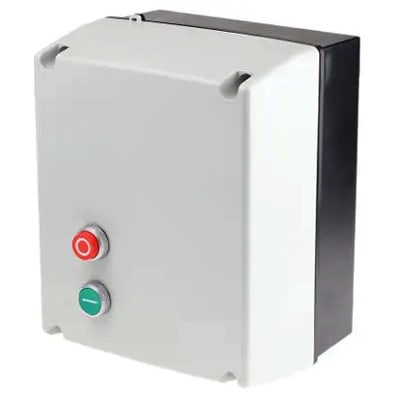
However, reducing the current also reduces the motor’s torque, which may make it unsuitable for use with heavier loads. Once the motor is up to about 80% running speed, the starter then uses a timer to automatically change the starter from the star configuration to a “delta” configuration motor starter, hence the component’s unique naming convention.
Star delta starters are the most common starters seen on three-phase induction motors, and their low-cost makes them readily available. RS’s RS Pro Series and the Carlo Gavazzi DAC01/PAC01 Series are great examples of this kind of starter. Before purchasing, however, make sure your motor is compatible with star delta starters. Star delta starters can only be installed on motors where six leads or terminals can be accessed, and the supply voltage must be the same as the motor-rated voltage for the delta connection.

Variable Frequency Drive (VFD)
DOLs, soft starters, and star delta starters all have their uses and benefits, but none of these options provide full motor speed control – a distinct characteristic of variable frequency drives (VFDs).
“A VFD basically has a motor starter built into it, but it offers other features as well,” says Bennett. “You have acceleration control, deceleration control. You can operate it at a constant velocity for a little while then lower the speed down. They’re also programmable; they can communicate with a PLC or some other controller on the front end, and they also have embedded I/O to allow them to turn on sensors to indicate an issue. For example, suppose you’re in the gold mining industry and operating a conveyor line equipped with a sensor somewhere to tell you if the rocks get above a certain height. A VFD will integrate with that sensor to turn the motor off.”
This control alone unlocks significant potential for energy cost savings as well. “If you have your AC motor sized properly and you know what it requires to operate, you can precisely program your VFD to run the motor at reduced power, or even shut the thing down completely if it’s not needed,” said Bennett. “For instance, if you have an HVAC system operating in a building at night in the winter, you’re not going to be using a lot of energy in a situation like that. A VFD makes this possible; otherwise the motor would just be running at a constant velocity the entire time.”
This being said, there are some disadvantages associated with VFDs, including higher upfront costs and a propensity to produce more heat than the other types of starters mentioned here. Should your application require the full, customizable speed control that a VFD offers, make sure additional steps are taken to ensure proper cooling and ventilation of the starter.
It is important to note that VFDs control the speed by adjusting both the voltage and the frequency and thus can only be used on AC motors. DC motors, however, can get similar functionality by using a variable speed drive (VSD), which controls motor speed by changing voltage only. Schneider Electric produces fine examples of both, such as the Altivar 212 Series and the Altivar 12 Series.
Final Thoughts
Although this list is not comprehensive, it should give prospective designers and buyers a solid understanding of what kinds of motor starters are commonly used, the advantages and disadvantages of each, and a few highlighted examples on the market to aid them in their search. Choosing an industrial motor starter is not a decision that should be taken lightly, and before purchasing, engineers should complete a detailed analysis of both their needs and the specifications of the equipment they already have on hand. As the old adage goes – measure twice, cut [or buy] once!
RS’s full selection of motor control devices.
To access custom direct advice from RS field application engineers like Allen Bennett, contact RS’s technical support center online or by phone at:
(866) 433-5722
Additional links:
